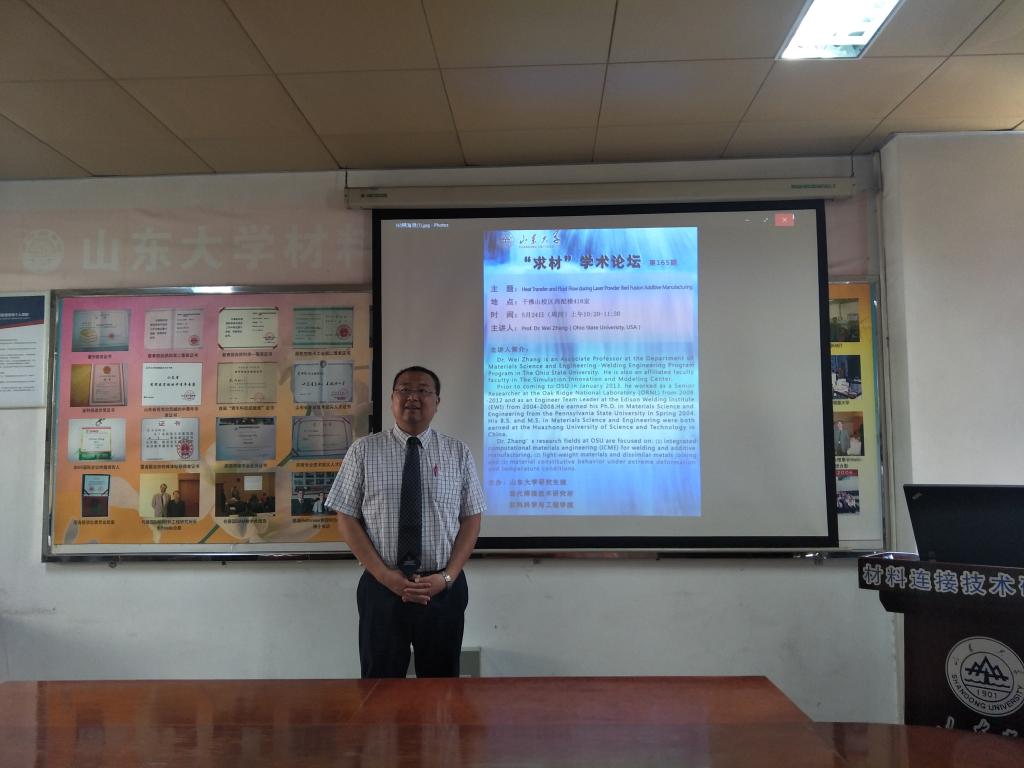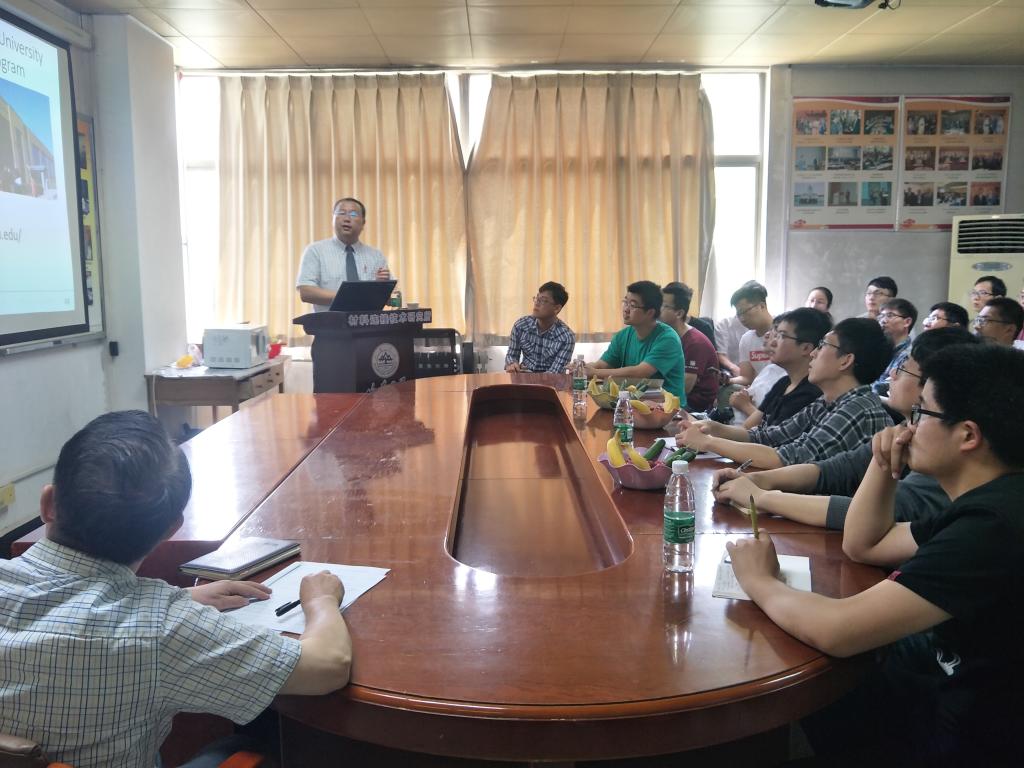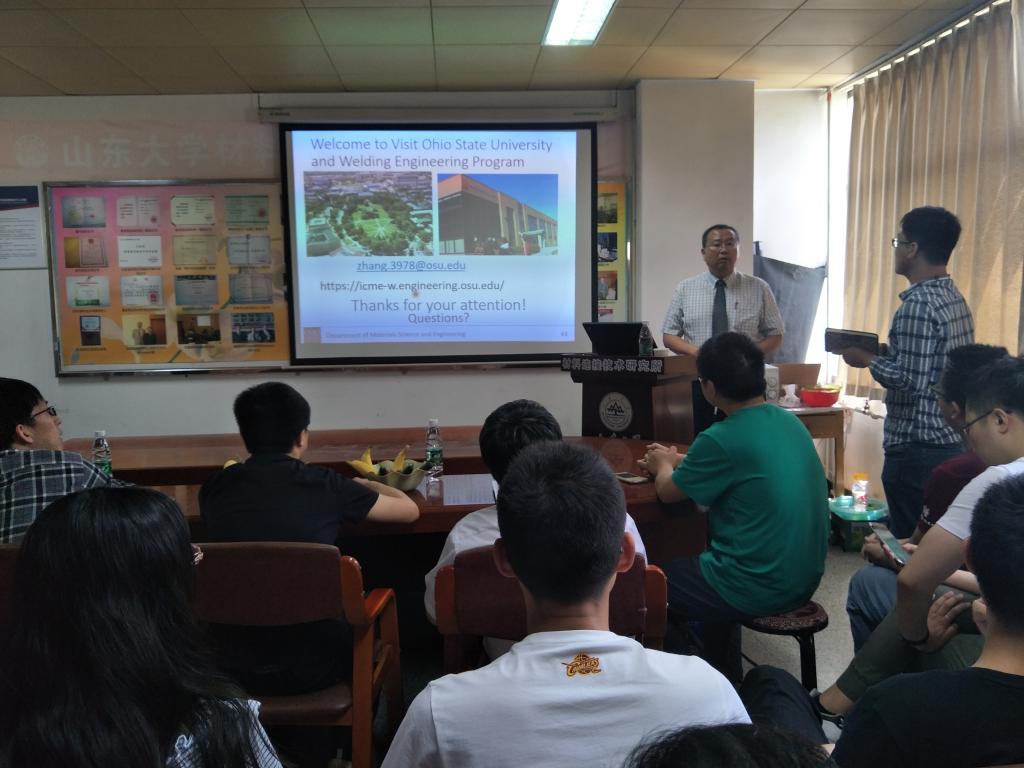5月24日上午10:20,材料科学与工程学院在千佛山校区西配楼418室举办“求材”学术论坛。此次论坛由山东大学研究生院、材料液固结构演变与加工教育部重点实验室及材料科学与工程学院共同主办,材料学院研究生会承办。应山东大学武传松教授邀请,Prof. Dr. Wei Zhang为大家作了题为“Heat Transfer and Fluid Flow during Laser Powder Bed Fusion Additive Manufacturing”的报告。

Prof. Dr. Wei Zhang introduced overview of welding engineering program at OSU and laser powder bed fusion additive manufacturing. He put the latter in detail from introduction, approach and baseline results, ongoing improvements, summary. In summary, he briefly made three points:
1. DEM+fluid flow models: Physics-based method toward improved understanding of melt pool dynamics and defect formation at meso-scale: (1) Important for assured mechanical properties.
2. Future opportunities: (1) Scale-up from~1mm to pratical size (~10mm) (2) Coupling with other models to predict solidification cracking and microstructure, residual stress and distortion.
3. Need: (1) Material property database. (2) Quantitative in-situ measurement.

报告结束后,与会师生热烈讨论,学术氛围十分浓厚,会场不时响起热烈掌声,大家都感到受益匪浅。

Prof. Dr. Wei Zhang, Ohio State University, USA. Dr. Wei Zhang is an Associate Professor at the Department of Materials Science and Engineering - Welding Engineering Program in The Ohio State University. He is also an affiliated faculty in The Simulation Innovation and Modeling Center (SIMCenter). Prior to coming to OSU in January 2013, he worked as a Senior Researcher at the Oak Ridge National Laboratory (ORNL) from 2008-2012 and as an Engineer Team Leader at the Edison Welding Institute (EWI) from 2004-2008. He earned his Ph.D. in Materials Science and Engineering from the Pennsylvania State University in Spring 2004. His B.S. and M.S. in Materials Science and Engineering were both earned at the Huazhong University of Science and Technology in China. Dr. Zhang’s research fields at OSU are focused on: (1) integrated computational materials engineering (ICME) for welding and additive manufacturing, (2) light-weight materials and dissimilar metals joining, and (3) material constitutive behavior under extreme deformation and temperature conditions.